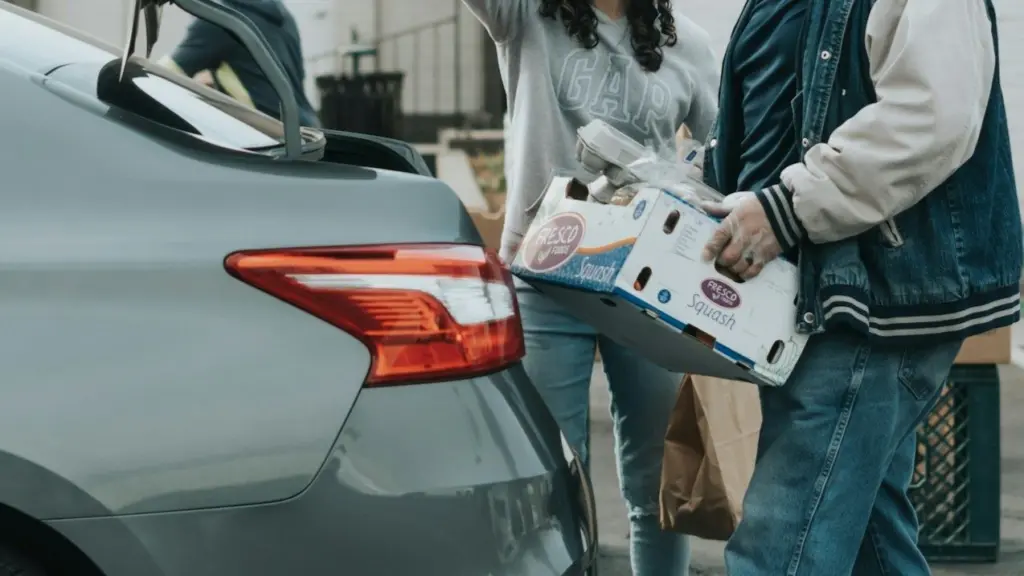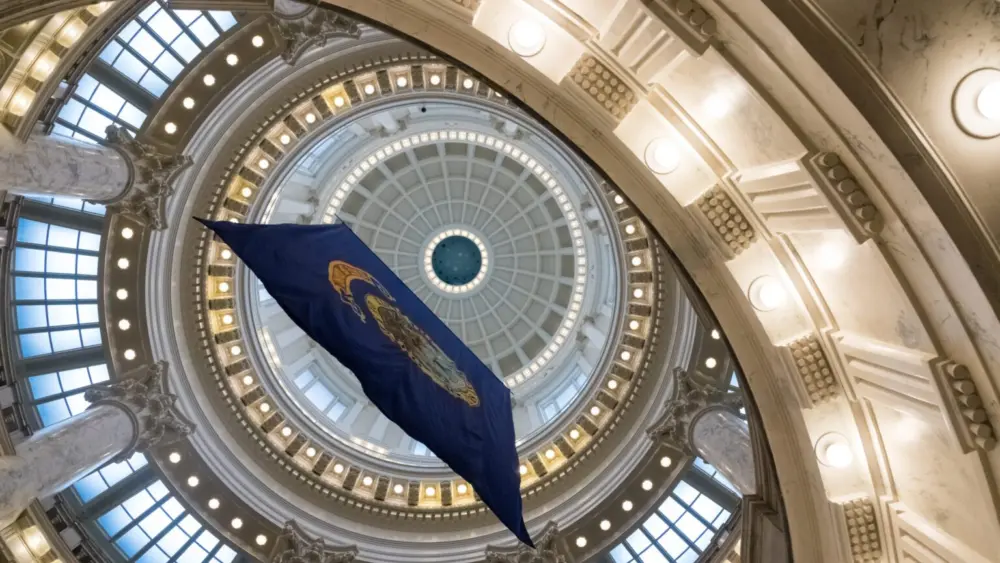OLYMPIA, WA – Washington’s already-squeezed food bank system expects further pressure as an estimated 170,000 residents stand to lose food stamp benefits under the president’s tax cut law.
Food banks already face high demand and difficult choices about how much they can stay open and what food they can hand out. Many are also burning through reserves they built up during the COVID era, when more donations were rolling in to help people struggling to buy food. This comes as inflation and other factors have kept grocery prices high, worsening food insecurity.
Temporary boosts to payments under the Supplemental Nutrition Assistance Program, or SNAP, that began during the pandemic ended in 2023.
And since President Donald Trump returned to office in January, his administration has cut hundreds of millions of dollars worth of shipments to food banks and funding for them to buy produce, meat, dairy and other food products from local farmers.
Aaron Czyzewski, advocacy and public policy director at Seattle-based Food Lifeline, likens the current circumstances to “going into another pandemic.”
“But this time without the disease, and this time without the federal government coming to help,” he said. “In fact, they’re running away and then taking things with them.”
The West Seattle Food Bank, for example, has had to offer cheaper ground turkey or turkey hot dogs as protein options instead of chicken thighs, as it navigates slashed funding and unprecedented need, said Robbin Peterson, the food bank’s development director. The organization also only provides milk every other week now.
Peterson’s food bank serves anywhere from 300 to 400 people on a normal day, to 650 on a busier day.
“We’re barely scraping by,” she said. “We need to be ready, because it’s going to be bad.”
The Supplemental Nutrition Assistance Program previously required able-bodied adults between the ages of 18 and 54 without dependents to work at least 20 hours per week to access food stamps. The megabill signed by Trump on July 4 raises the ceiling to age 64 and adds work requirements for parents whose children are at least 14 years old. Previously exempt veterans, former foster youth and people who are homeless would also need to work.
In Washington in April, more than 906,000 people were enrolled in SNAP and received a total of $167 million in benefits. That averages out to about $6 per day per person.
The state says 137,000 people could lose their benefits under the work requirements, and in addition, 33,000 refugees and asylees would no longer be eligible.
Unlike changes to Medicaid, cuts to SNAP take effect this year. In Washington, the food assistance program is known as Basic Food.
The new law also potentially cuts benefits for those who keep them by an average of $56 per month, according to the state, while slashing federal spending on nutrition programs nationwide by an estimated $186 billion over 10 years.
The White House has said “the mission of the program has failed,” while the GOP overhaul “promotes work, responsibility, and restores SNAP to serve the truly needy.”
What it means for a rural food bank
Many of the clients who frequent the Toppenish Community Chest on the Yakama Reservation are farmworkers.
They come from across the surrounding rural communities, like Zillah, Wapato and Granger. Those towns have food banks, but people seeking food often visit several around the county to get enough.
About 800 families each month use the Toppenish food bank. In the summers, that usually drops to a couple hundred, as more farmworkers return to the fields, director Cecilia Chavez said. But not this year, as need has remained high.
If even more people start coming in, the only solution Chavez sees is to reduce the amount of food each person can get. She then figures more people will go further and further away to other food banks to make ends meet.
“They have to find food for their families,” she said.
Food banks in rural parts of the state are also sometimes open just once or twice a month.
Washington’s two congressional districts in central and eastern Washington have the highest share of residents on SNAP, at 18% and 16.5%, according to federal data.
Each of those districts is represented by a Republican in Congress — U.S. Reps. Dan Newhouse and Michael Baumgartner. Both men voted for the legislation slashing SNAP to help deliver tax cuts. Newhouse hails from Sunnyside, just east of Toppenish.
The farming economy east of the Cascades does benefit area food banks, as they tend to rely much less on government programs to provide food than those in cities.
The Community Chest gets food from local grocers and small-time farmers as well as a distribution center, among other sources. But Chavez says the food bank already has very limited supplies in reserve.
Some clients at the Community Chest have also stopped coming due to fears of immigration enforcement. Peterson has also seen this in West Seattle.
“We have families who are fearful of coming in person, so neighbors will come and collect food for them and deliver it to them personally,” said Em Nitz-Ritter, of statewide hunger relief organization Northwest Harvest. “Oftentimes, those folks need the food support the most, and we’re seeing increasing barriers to their access.”
State support and the path forward
Hunger relief organizations made it out of a tough state legislative session this year largely unscathed.
Despite a multibillion-dollar budget shortfall, lawmakers earmarked the requested $93 million for emergency food assistance. However, the budget crunch meant the Legislature didn’t deliver on providing free school meals to all of the state’s public school students.
With federal cuts to come, Czyzewski said state lawmakers will need to appropriate more money for food banks to ensure they keep enough food on the shelves. But under the new law, in the coming years, states will also shoulder more costs paying for SNAP.
Peterson fears now that community support won’t be able to fill the huge gaps potentially left by Congress and the White House.
“Most food banks rely on their communities to support them, and of course, those communities are suffering from high food prices too, so that means we’re going to need more donations,” Peterson said. “But is the public ready to do that? Are they in a position to be able to help? I just don’t see how this system is going to sustain the number of hungry people.”
Still, Czyzewski expects that, similar to the pandemic, Washingtonians will respond to food banks’ latest plight with generosity. And Nitz-Ritter already sees more people getting interested in doing what they can to help their neighbors access food.
“It really can’t be overstated how significant the impact of one person caring really does make,” Nitz-Ritter said. “It is extra important in this particular political moment to continue to empower people and for them to hear that, ‘Not all is lost. Things are bleak, but they’re not over, and the need remains, right? And so if the need remains, the work remains.’”
Washington State Standard is part of States Newsroom, a nonprofit news network supported by grants and a coalition of donors as a 501c(3) public charity. Washington State Standard maintains editorial independence. Contact Editor Bill Lucia for questions: info@washingtonstatestandard.com.





